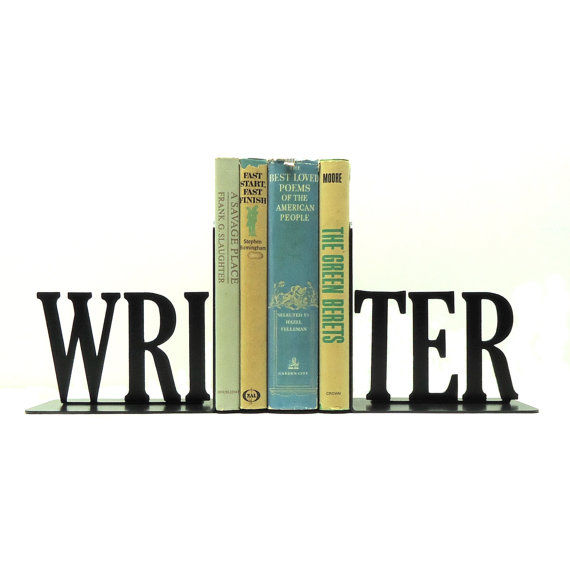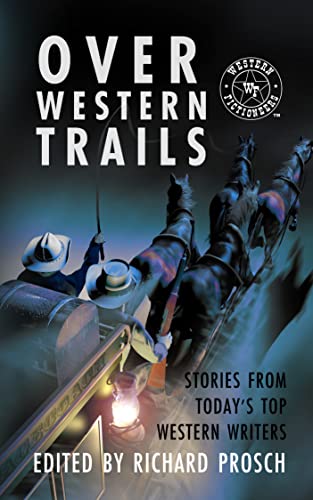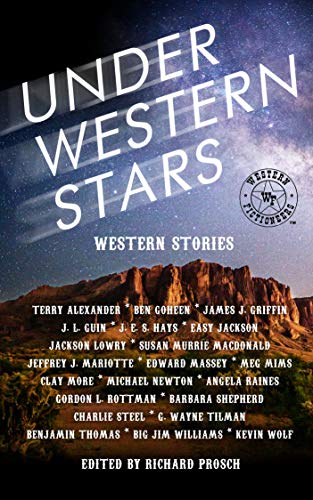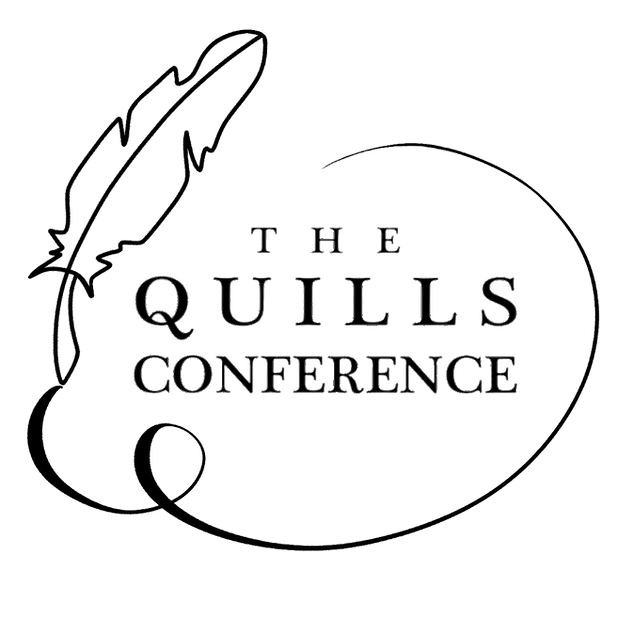We’ve been talking about selling your books at events. You may have good luck at a gun show, for example, or a ComicCon event. Once you have your promotional material sorted, it’s time to go set up and sell.

First, you need to be aware of some things about your event. Is it inside or outside? Weather can be tricky, so if it’s outside, think carefully before signing yourself up. If you’re under cover, think how long the event is going to last. A county or state fair, for example, is a great event, but it can last around 5 to 7 days. Can you commit to the whole event? How many hours a day would you need to be there? A fair can last all day, meaning you’d need to man your booth 10 to 12 hours or more. Do you need a partner or helper so you can have bathroom breaks? Should you go in with some other authors so you can watch each other’s backs (and same some fee costs)?
Payments: You need to be able to take a variety of payments, both cash and cards. You’ll probably want to invest in something like Square or Stripe where you can swipe cards on your phone with a wifi signal. You can also use PayPal or Venmo. Plan ahead and print out a QR code so Venmo folks can just scan it and go.
Keep plenty of change on hand for cash transactions, too. Most authors round their book prices up to an even number, so that making change is easier. You need to remember you’ll be paying taxes on the income, too, so marking up will help you there as well. If your book retails for $21.99, for example, you might want to sell a signed copy for $25.
Some Other Tips: Sets sell well. Even if you don’t have an official boxed set, you can tie a bundle of your books up with some nice craft string, maybe add a seasonal ornament or item, and offer a discount price.
Dress for the job you want. You should look like either a professional author (no ratty jeans, for example) or like a character from your books. Many authors dress up in period clothing, especially Western writers. It attracts attention from passers-by and might lead to more sales.
Don’t sit this one out. It’s tempting to sit down and wait for traffic to come to you, especially if it’s hot or cold or humid or crowded. Resist the temptation. You can sit down once you have the cold, hard cash in your hot little hands. Stand up, make eye contact, and smile, smile, smile! You’d be surprised at how much more business you’ll get that way. You’ll never see a top salesman sitting down in a showroom, so don’t fall into that habit yourself.
Record the event for posterity. Take photos or have someone help you take them. Even if you don’t make a lot of sales, you’ll want to use the images to advertise that you’re out there in the community and folks should start looking for you. They’re also great for your social media posts (“Look what I did last weekend!”).
If you’ve been following along, you now know as much as I do about selling at a local event. Good luck and happy selling!
In our last post, we talked about finding events where you can sell your books. Unusual places like gun shows or flower festivals can be fun and profitable. In this post, we’ll talk turkey about how to set up your event.

Your Platform: I know you’ve all seen those booth or tables. The ones with the professional looking banners, posters, bookshelves, and everything under the sun an author could use to promote themselves. You want all that. Of course you do. But should you?
All that promotional material costs, usually big bucks. If you can make do with something smaller, do it. Once you start making big bucks, you can spend those bucks on advertising. What sorts of advertising should you consider essential, however?
You do need something with your name on it. It doesn’t have to be a full banner. I have a perfectly nice poster-sized stand-alone that works well for me (and didn’t cost an arm or a leg). It rolls up when it’s not on the frame, so it’s easy to transport and store. If you have the spare cash, you could invest in a poster or two with your book cover(s) on them, maybe with a short blurb to attract attention. Otherwise, your name will do.
You’ll need something to hold your business cards, whether it’s a fancy one designed specifically for such a task, or just an inexpensive tray you found that matches your author color scheme. And you want some way to have at least one of your books standing so passers-by can see the cover easily. Those doohickeys aren’t very expensive. They’re usually clear plastic like what you see at your local bookstore.
You should also have one or two tablecloths on hand. They don’t have to be printed with your name on them, but they can be if you have the money. Many events will supply a cloth, but many won’t. You can get inexpensive tablecloths just about anywhere. You can even order book-themed ones from Amazon.
One essential item should be a sturdy wheeled cart or tote (or two). Your back will thank you when it turns out the event parking lot is half a mile from your table. You should be able to fit your book inventory and all your promotional material inside.
What if you do have a larger budget for promotion? Then buy the curtains to surround your booth. You can hang posters on them, too, showing your book covers, blurbs, and even artwork you’ve commissioned. Get the tablecloth with your name and book covers on it, too.
What about give-away items? You should always have something on your table to attract customers, even if it’s just a bowl of (individually wrapped) candies. Bookmarks and postcards are great, but hand them out yourself instead of just piling them on the table. People won’t pick up a card, but they’ll take one from you. Look for cheap items that tie into your genre or books. One thing Western authors can do (and often don’t think of) is to give away colorful bandanas.
You could also have a give away where entrants must write down their email address in order to receive the prize (a virtual gift card, for example). This does double-duty by adding to your email list while it attracts customers. Just don’t go overboard with the prize – you want people who might actually read your newsletters, not just people looking for prizes.
In our next post, we’ll talk specifics: how to set up and break down your table, how to price your books, and even a few tried and true sales techniques.
Let’s talk about selling books. You’ve all been to those events where you’ve spotted an author set up at little table hawking their wares. How do they find out about all those events and are they really worth the time and effort?

Where can you sell your books? Here are some ideas you might not have thought of:
- Book Fairs (of course)
- Gun Shows
- Craft Fairs
- ComicCons
- Renaissance Fairs/Reenactment Events
- Car Shows
- Art Shows
- Festivals
Here are some places you can look to find events:
- Chamber of Commerce – check online calendar and social media
- Library – same
- Museum(s) – same
- City or County Government websites
- Service Clubs
- Tourism Organizations
Once you’ve found a good event, you’ll need to determine whether or not it’s worth your time and effort to sell there. First, how much do they charge for a booth or table? If it’s more than around $100, it’s probably not worth it for you as a small author. If you’ll need to travel far enough to exceed that cost in gas money, it’s probably not worth it either. Nowadays, that’s going to limit you to around a tank of gas round trip, but you must consider costs when selling at events or you’re not going to recoup your money there.
In Part 2, we’ll talk about the How-To of setting up and running a sales event.
Mailerlite has threatened us with a fate worse than death if we don’t authenticate and validate our websites. What they’re talking about is making them come from some other location besides a free email server like gmail.com.

My alter ego puts out a newsletter once a month (or so), so we have been scrambling to get the emails put into place. An authenticated email would be something on the order of author@author.com – from the website instead of from a free server. See the difference?
Seems that free servers like gmail.com have been ending up in people’s spam folders instead of being seen and read. The AI’s that handle that sort of thing have collectively decided that if you have a free email account, you are a spammer. So the way around that is to have a verified, authenticated website with an email account. It’s a little complicated to get this done, but supposedly it’s worth it.
I’ve been lucky with my book covers so far. Even with minimal input, they’ve turned out pretty good looking.
This is the latest: Over Western Trails

I like the simple lines of this cover and the pastel colors. The next is Under Western Stars:

This is a fatter book and the addition of our names on the front cover makes it look stuffed full of wonderful stories. I like the horizon line in the middle, too.
I do most of my marketing on social media, mainly Facebook and Twitter.

The main thing I do without fail is to post daily on both platforms. On Facebook, I share articles for writers, as well as cartoons and inspirational sayings. On Twitter, I post one writing prompt every single day of the year. How’s it working? Well, on Facebook I have nearly 200K followers. Twitter is much slower because I never bothered taking out an ad the way I did on Facebook. I only have a few hundred followers there, but I treat them the same way I treat the main platform and give them what I’ve promised without fail. Even when I had COVID, I still posted my social media marketing.
Another platform you might try is Instagram, where you can post images of your books, your readers, and your readers holding your books. You can do a cover reveal or ask followers to post pictures that remind them of your settings or characters. There are many image-related topics you can use on this platform.
TikTok has become very popular. This is a video-sharing platform similar to YouTube, which you can also use if you’re a video poster (which I’m not). TikTok also has something called BookTok, where people review books. Don’t review your own titles, of course, but do get your name out there and review your favorite books.
In short, there’s a platform for you, no matter how you like to advertise. Facebook is all about conversations between you and your followers. Twitter is all about the short blurb. You can include images and videos within your “tweet” if you’d like. Instagram is images and YouTube and TikTok are video platforms. Just pick one or two and get started!
If you’re not on Instagram, you’re not hitting all your readers. Younger folks prefer Instagram, Snapchat, or even TikTok to the “golden oldies,” Facebook or Twitter.

Here are some ideas you can use to get you started on Instagram (or Snapchat). The idea is to post photos, not text.
- Post your cover art, including any rejected covers if you have access to them
- Post images of your book in various locations around your town (or the world)
- Post images of fans holding your book (tie-in with the above)
- Post images of places that remind you of your book’s setting, or which inspired the setting
- Post images of people who remind you of your characters (be sure they’re not celebrities though or you’ll end up paying royalties!)
- Post images of fan art for your book
- Post photos of a page or two of your book
- Post photos of any illustrations inside your book, including maps
With that list to get you started, you’ll soon be thinking of your own photo posts! Happy Hunting!
Another good session at the Quills Conference was “Short Story Prep & Submission” by President-Elect John M. Olsen.

Polishing Your Text – when it comes to writing tools to polish your text, you can find pretty much anything you need:
- Microsoft Word
- Scrivener
- Hemmingway
- Grammarly
- ProWritingAid
Each tool works slightly differently. Some are free, while others charge a fee. Try some of them out and see which you like best. Just remember that grammar and spelling programs may steer you in the wrong direction at times. You need a firm grounding in each area so you can override a mistaken “correction” (like sound-alike words and there/their/they’re).
Polishing With People – there are also lots of different ways to connect with other writers and readers to help you polish your writing.
- Local writing groups that critique
- Online critique groups like Critters or Scribophile
- Workshops (ranging from free to very expensive!)
- Family & Friends if they are qualified to critique
- Editors (sometimes … )
Things You Didn’t Know You Needed:
- An author bio with a professional head shot
- List of previous publications (if you have them yet)
- Professional or hobby expertise that pertains to your writing
Professionalism/Submitting: As an author, you will deal with many other authors, agents, editors, and publishers for whom this is their full-time career. Respect their time, keep your commitments, be easy to work with. And expect the same professionalism from others. As an author projecting a professional image, you will have a lot of things to keep track of. It’s your job as a self-employed business owner to document everything. Know what you have written and where you sent it. Know what the response was or when you should hear back. Once you’ve sold something, know when you’ll get your rights back. All of this data can be kept in a spreadsheet, in a text document, or even on a cork board – although Olsen recommends keeping it on a computer and making frequent backups. Submission Grinder can track much of this for you (but not all of it).
“One important thing to remember with writing and publishing is that you are not selling your stories. You are selling the right to publish your stories for a period of time specified by a contract. With short stories, rights usually revert anywhere from the publication date to a year after that. In some cases, it goes longer. Once you get your rights back you can sell the rights to publish the same story again, but as a reprint. Publishers want to know if the story is new or if it’s already been published, and some won’t take reprints.”
This might be the last of the conference reports! Today I’ll go over “The A to Z of Your Indie Author Business” by Anna Castle.

First of all, you need to determine your goals. If you plan to make a living writing fiction, you must aim at popular genres, learn to produce two to three books a year, and become a marketing wiz! If writing is your retirement plan, on the other hand, you can follow your muse and market to find readers as much as to pay those writing costs. If you only want to write one book, focus on your craft and don’t worry about marketing.
Next, pick a genre to write in. Try to narrow it down by what you like to read, what you like to write, and what sells. Then, worry about producing a great book. The single hardest part of self-publishing is finding the feedback every author always needs and editing yourself. You’ll need to edit for:
- Story Level (developmental or content edit): characters, pace, & structure
- Sentence Level (line edit): language use, grammar, style
- Textual Correctness (copy edit): consistency, punctuation, grammar & spelling
- Proof-reading: typos. Also watch out for stray white space and tighten up your story.
For your cover, remember that everyone judges a book by its cover. Save up and hire a pro. For formatting, you can also hire a pro or get recommendations from other authors. Try Vellum, DIY Word, or templates from The Book Designer. Create a beautiful book!
What about ISBNs (International Standard Book Number)? You basically have two choices: pay for your own or use one from the vendor (Amazon Kindle, etc.). If you purchase them yourself, they’re fairly expensive in small batches, less so in larger ones. If you go with the vendor, remember they will be the publisher if you use their ISBN. You will need a separate ISBN for the paperback, hardback, large print, audio book, etc.
For distribution, you can “go wide” or stick with Amazon exclusively. This only applies to e-books and audio books. Amazon will give you deals for not publishing elsewhere. So will Audible, but Anna recommends you not sign an exclusive with them! The downside to signing with Amazon is that they can change their rules at any second (and have done so). Many readers want to buy books somewhere else. And historical fiction is one of the genres that doesn’t do so well in Amazon Kindle Unlimited (in Anna’s opinion). Audible doesn’t allow book promotions, which are the backbone of marketing. Anna recommends starting out with Kindle Unlimited and give it a year. Publish more books, then decide based on your earnings and larger goals whether or not you want to “go wide.”
Consensus recommends publishing your print books through Amazon’s KDP platform and through Ingram Spark. In both cases, you’ll upload a formatted pdf file. Anna recommends doing KDP first because they have a program that flags any problems with your book. Also, they have no fees, so you can upload, preview, fix, and repeat as often as necessary. One thing Anna recommends: do not check “expanded distribution” at KDP! You’ll be using Ingram for all your other bookstores and libraries. If you buy your own ISBNs, use the same one for your print edition at both places. That way the publisher, title, and format will be the same everywhere.
For e-books, remember that all retailers will take a cut of each sale, typically around 25-30%. All will use the epub format. Some retailers include: B&N, Kobo, iBooks, Google Play, Smashwords, and smaller outlets. There are also library outlets like Hoopla and Overdrive. Distributers will take a cut (usually 10%) to distribute your e-book to many retailers. Don’t use Ingram for e-books! Try Draft2Digital, Smashwords, or PublishDrive. The consensus for “wide” authors is to upload directly to Amazon, Kobo, B&N, and Google Play. This is so you can access their promos! Use D2D or PublishDrive for the rest. You should also make “cheat sheets” for each book to make this process easier. You can find an example at www.annacastle.com/handouts.
For pricing, take a good look at other indies in your genre and do what they do. Do not look a traditionally-published pricing! For e-books, a typical pricing scale runs around $4.99 for 90K novels, $2.99 for novellas (25K to 40K), and $0.99 for short stories. For print, Anna recommends $14.99 for novels and $7.99 for novellas. Don’t let the vendor convert your prices to other currencies! Round up or down yourself, whatever makes a neat number in that currency. If you are a “wide” author, you can keep the first book in a series free to draw in readers. It’s easy to advertise. You can also make books in Kindle Unlimited free every 3 months.
You’ll need to do taxes, too! Keep records of everything — however small a purchase or fee might be, write it down. Keep all receipts and scan them into your computer. Use Quicken or a spreadsheet program. Document everything — you’re trying to make a record that you are seriously trying to make a profit from your writing. In the US, base your taxes on Schedule C: self-employment taxes. You can also start with https://www.janefriedman.com/author-taxes/ and read Jane’s excellent article.
Some basic marketing strategy: set a budget and stick to it! Reduce the price of one book to $0.99 or free and promote that book with all you have. Hopefully, readers will like that well enough to purchase the other books in your series. Those purchases should pay back the ad price plus a profit. Also, the activity on the reduced price book will boost that book’s rank, making it easier for readers to find. Of course, marketing won’t do much if you only have one book out there, so get busy and finish that series!
You should have a newsletter, also. This is a must for any author looking for wider readership. It’s a big topic, so take a class and read a few books. Take a couple of weeks in between reading books to set your newsletter up. Mailerlite and Mailchimp are good starting places. They do have a learning curve, but are free for under 1,000 subscribers. When you increase your followers, you can upgrade to a paid plan that offers more advantages, too. Read Newsletter Ninja by Tammi LaBreque for guidance.
There are also newsletters for avid readers giving them book promotions. BookBub, FreeBooksy, FussyLibrarian, RobinReads, Booksends, etc. are great resources. You buy an ad for one specific day. Prices range from $10 (AwesomeGang) to $695 (BookBub). Some require a certain number of reviews for your book before you can advertise. Start small and work your way up. Note: most of these services book at least a month in advance, so plan accordingly.
You can also think about buying pay-per-click ads from Amazon, FaceBook, or BookBub. All will allow some type of targeting to reach your ideal readers. Facebook offers a suite of demographic and interest settings; Amazon (AMS) uses keywords like “Victorian Romance,” author names, or other book titles; and BookBub uses broad keywords like “historical fiction” plus author names. You only pay when someone clicks on your ad (and hope they purchase after clicking). Take a course on this, too, and read more books about it. It’s not hard to get started but it takes daily work to get good at it. Your basic strategy is to tinker with your targets and budgets.
Of course, you must have a website with your contact and book information. Blog only if you enjoy it, and push that blog everywhere (FaceBook, Twitter, Amazon or Goodreads author pages, etc.). Guest posts might increase your visibility a bit, so try to find fellow authors or experts who are willing to do this. Create a polished Amazon Author Page and one at BookBub. You need a bio and photos, and remember your bio is ad copy, not a resume! Your goal is to entice readers to buy your books. Be charming! Read a bunch of author pages by your favorite authors and see how they do it. And hang out where your readers are (FaceBook, Twitter, Instagram, etc.). 15 to 20 minutes morning and evening is plenty of time. Remember to be 80% social and only about 20% marketing. Be real, be friendly, be polite — but most of all, have fun!
I’m still (yes! I told you it was a great conference) watching HNS webinars and videos. Today I’ll share “All is Not Lost: Making the Most of Your Research” by Claire Gebben.

Claire started by quoting a comment her editor gave her when she started writing. “Congratulations, you’ve written a book … you’re a third of the way there!” There are three parts to becoming an author, she says: 1) Writing the book, 2) Publishing the book, and 3) Marketing the book.
Writing the Book: While you’re researching and writing:
- Where do you go Online: digital books and archives, online blogs, specialized organizations/communities
- Where do you go Offline: living history exhibits, special collections, libraries, museums, immersion research adventures
- What to take with you: cellphone, business cards, notebook. Keep careful track of` people who help you – send thank-you notes! – keep names/addresses/emails/etc. for acknowledgements, book promotions, etc.
Writing the Book: Building a network:
- Blog about your research/topic of interest – “fun facts to know and tell” – be sure to use hashtags/tags to get posts seen by others who like the same things
- Social media
- Support other authors in the same genre – write reviews, post interviews
- Reach out to experts, both online and in the field, and support them in return – read and review their books, interview them, blog about them, etc.
- Scope out your reading audience – get acquainted with readers who share your interests
- Meet other writers/authors via writing groups, attending events, etc.
Publishing the Book:
- Write articles for publications, ezines, etc.
- Stay present on social media
- Become a go-to resource/authority for followers/subscribers via newsletter
- Gather blurbs/testimonials from well-known authors/experts (and have them vet your manuscript)
- Continue to build your email list
- Consider your niche – what venues would be most interested in your book/subject? Historical societies, rotary clubs, universities, women’s groups, etc.
- Keep track of people to thank and acknowledge
Selling the Book:
- You are now an author!
- For press releases, radio, and TV interviews, mine you book for controversial “talking points”
- The book launch is your coming out party. Involve the community and be a storyteller
- Hold at a venue that syncs with the era/setting of your book
- Dress in costumes of the period or fantasy world and ask your friends to do the same
- Create an atmosphere that evokes the book with food and drink and decorations
- Offer themed mementos
- Create a compelling PowerPoint to accompany your book talks. You can do that more readily since you took your camera everywhere while writing the book!
- Use your research to add value to a reader’s book purchase, with insights, education, recipes, and story presentations as you make appearances, and on your blog
- Make use of social media and book-selling websites to increase visibility as an author/authority
- Goodreads
- Amazon Author Page
- #Bookstagram and @EpicReads on Instagram
- Consider additional book topics –fiction and/or nonfiction – arising from the research you’ve done
Congratulations: you’re on your way! Enjoy the journey.